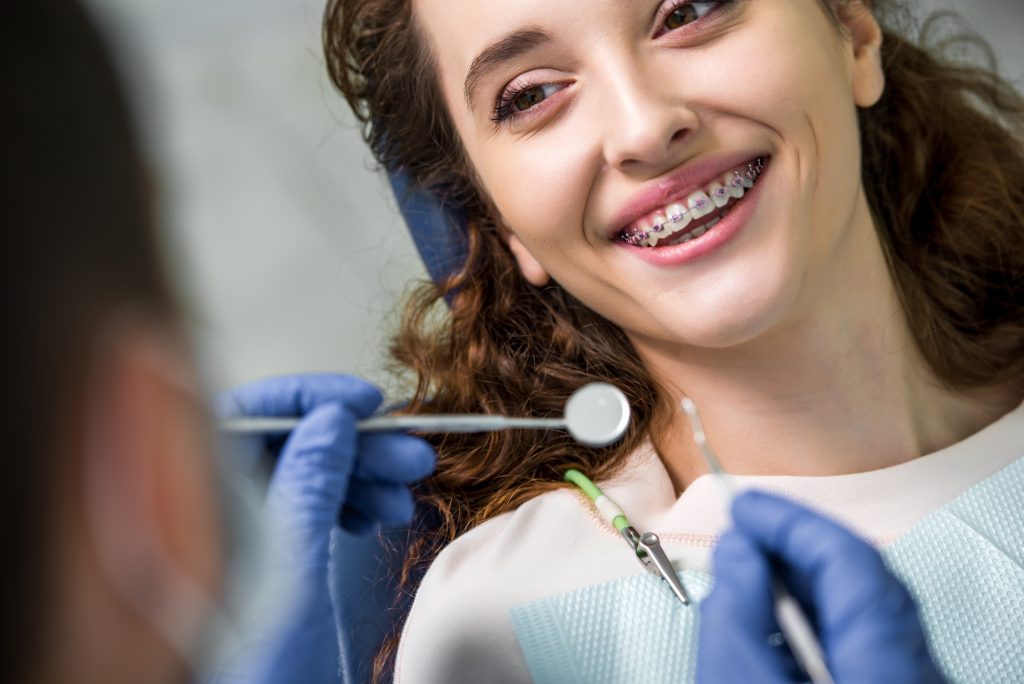Braces have long been one of the most effective orthodontic solutions out there. Most of the time, children and adolescents have worn them. Over the years, most adults have also worn them as well.
Regardless, it’s a solution for all ages. This write-up will discuss how braces work. Whether it’s for a child or an adult, the concept is the same.
If you believe that braces may be the best option for you, you’ll want to visit an orthodontist. Their consultation will help you determine if they are the best treatment for you. If they are, let this guide help you get a better understanding about braces.
Keep reading and learn more.
How does it all work?
Braces consist of wires and brackets. The latter is considered one of the main components. The brackets are attached to each tooth with the help of special dental cement.
When the brackets are attached, the thin wire runs through it. Meanwhile, small rubber bands will hold the wire together. The wire is designed to apply pressure in an effort to move them into their new position.
These braces will stay on until the treatment is complete. The time table will depend on each person. Each need for treatment is different and some will last longer than others.
What kind of braces are available?
There are various types of braces that are currently available. Let’s take a look at the following:
Metal braces
These are the most common traditional braces you’ll find. If you are looking for an economical option, this will be it. These are made from stainless steel and the most durable option on the list.
One of the major disadvantages of these braces is that they are noticeable. They might not be as aesthetically pleasing. For someone who might be a bit self-conscious, this can be an issue.
You may have other equipment you can use like braces rubber bands for braces.
Ceramic braces
This type is similar to metal. These are made with clear or tooth-colored material, making them less noticeable compared to their metal brace counterparts. This is normal for adult braces options.
This may be the perfect option for those who may be self-conscious about wearing braces. However, the durability is not as great compared to metal braces, which means more maintenance. If you are comfortable with more visits for maintenance during treatment, ceramic braces could be a good option for you.
Lingual braces
These are special braces that are attached to the backside of your teeth. This means they won’t be visible to anyone. If you are concerned about the appearance of braces, this can be a great option.
One major disadvantage is that they can be a challenge to adjust. This can also include more visits to your orthodontist during the treatment process. Another disadvantage is that they are one of the most expensive options on the list.
When it comes to considering braces, your needs and preferences are important. However, the cost of the treatment itself should also be considered as well. One question to ask yourself is: does your insurance cover it?
It may take care of a percentage of the orthodontic treatment. But you may want to consider additional financing options that won’t hurt your wallet. The types of braces and cost should always be considered if an orthodontic treatment is likely in your future.
Adult braces options are also available for those who need them.
Invisalign braces
Invisalign braces have gained popularity over the past few years. These are made from clear, medical-grade plastic that are made to fit your teeth. They are custom-made using 3D printing and imaging technology.
One of the major advantages is that these are removable. Meaning they won’t disrupt your brushing habits. At the same time, you can remove them when you are eating food.
If there is one thing we know that can be annoying, it’s food getting caught in braces. Removing food particles in and around your braces can be a challenge. Especially when you are using floss after you have brushed your teeth.
Invisalign removes this problem completely. Yes, this is another expensive option and for a few reasons. For one, Invisalign braces provide you with a quicker recovery time.
Furthermore, they are great for minor orthodontic conditions. If you want to know how these braces work, talk with an orthodontist that works with Invisalign. This will include a consultation appointment that will include an evaluation to see if you have a good enough condition.
They’ll also be able to take images and fittings. They can also determine if traditional braces are an alternative option if Invisalign doesn’t appear to be the case. Invisalign treatments can last anywhere from six months to a year (depending on the treatment option and the person).
Deciding which braces type is best for you?
If you need an orthodontic treatment, it takes a consultation appointment to get started. From there, the orthodontist will ensure which type of braces will be best for you. If you feel the need to get a second opinion, do so to get a definite answer.
If the first and second opinion are the same, that’s the treatment you need. Whether it’s traditional braces or Invisalign, there’s a solution out there for your own orthodontic needs. As long as you follow through with it, it will be effective and give you the desired results.
Final Thoughts
This guide on how braces work should give you the best understanding about various treatments. Orthodontic treatments have evolved over the years. Some of them don’t even require special equipment. Gone are the old school headgear. And ‘in’ are the newest and cutting-edge treatments that use advanced technology. Keep in mind that the length of these treatments might be shorter than they used to be back in the day.
However, some severe cases can require other treatment options including surgery. See your orthodontist today about what your options are for braces.



